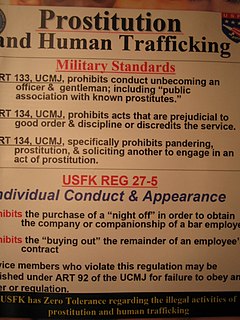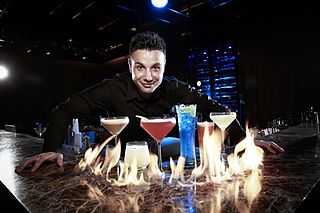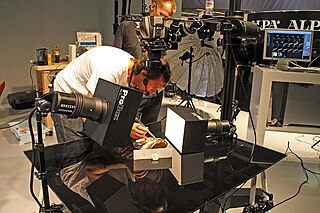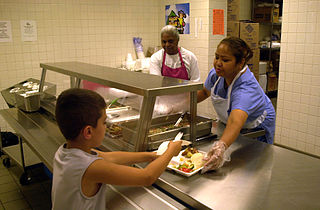 W
WAn arabber is a street vendor (hawker) selling fruits and vegetables from a colorful, horse-drawn cart. Once a common sight in American East Coast cities, only a handful of arabbers still walk the streets of Baltimore. They rely on street cries to attract the attention of their customers.
 W
WA baker is a tradesperson who bakes and sometimes sells breads and other products made of flour by using an oven or other concentrated heat source. The place where a baker works is called a bakery.
 W
WA bargirl is a woman who is paid to entertain patrons in a bar, either individually or, in some cases, as a performer. The exact nature of the entertainment varies widely from place to place; depending on the venue this can be individual entertainment ranging from light conversation to sexual services, or more public entertainment in the form of go-go dancing or striptease. Variants on the term include "B-girl", "hostess", "juicy girl", and "guest relations officer".
 W
WA barista is a person, usually a coffeehouse employee, who prepares and serves espresso-based coffee drinks. In Starbucks, over the counter employees are referred to as "baristas", although the preparation process is fully automated.
 W
WA bartender is a person who formulates and serves alcoholic or soft drink beverages behind the bar, usually in a licensed establishment. Bartenders also usually maintain the supplies and inventory for the bar. A bartender can generally mix classic cocktails such as a Cosmopolitan, Manhattan, Old Fashioned, and Mojito.
 W
WA beer sommelier, also called a cicerone, is a trained professional, working in the hospitality and alcoholic beverage industry, who specializes in the service and knowledge of beer. The knowledge required for certification includes an understanding of styles, brewing, ingredients, history of beer and brewing, glassware, beer service, draught systems, beer tasting, and food pairings. The profession is relatively new but growing.
 W
WA butcher is a person who may slaughter animals, dress their flesh, sell their meat, or participate within any combination of these three tasks. They may prepare standard cuts of meat and poultry for sale in retail or wholesale food establishments. A butcher may be employed by supermarkets, grocery stores, butcher shops and fish markets, slaughter houses, or may be self-employed.
 W
WA carhop is a waiter or waitress who brings fast food to people in their cars at drive-in restaurants. Carhops usually work on foot but sometimes use roller skates, as depicted in movies such as American Graffiti and television shows such as Happy Days. Carhops have long been associated with hot rods.
 W
WThis is a list of notable cheesemakers. Cheesemakers are people or companies that make cheese, who have developed the knowledge and skills required to convert milk into cheese. Cheesemaking involves controlling precisely the types and amounts of ingredients used and the parameters of the cheesemaking process, to make specific types and qualities of cheese. The milk may be from a cow, goat, sheep or buffalo, although worldwide cow's milk is most commonly used. Cheesemakers also need to be skilled in grading cheese to assess quality, assessing defects and suitability for release, and cheese ripening. The craft of making cheese dates back at least 5,000 years. Archaeological evidence exists of Egyptian cheese being made in the ancient Egyptian civilizations.
 W
WCheesemaking is the craft of making cheese. The production of cheese, like many other food preservation processes, allows the nutritional and economic value of a food material, in this case milk, to be preserved in concentrated form. Cheesemaking allows the production of the cheese with diverse flavors and consistencies.
 W
WA chef is a trained professional cook and tradesman who is proficient in all aspects of food preparation, often focusing on a particular cuisine. The word "chef" is derived from the term chef de cuisine, the director or head of a kitchen. Chefs can receive formal training from an institution, as well as by apprenticing with an experienced chef.
 W
WA cook or private chef is a household staff member responsible for food preparation.
 W
WA cook is a profession for individuals who prepare food for consumption in the food industry in settings such as restaurants. A cook is sometimes referred to as a chef, although in the culinary world, the terms are not interchangeable. Cooks' responsibilities include preparing food, managing food stations, cleaning the kitchen, and helping the chefs. Restaurants will give a title to the cooks according to their designated stations. Examples are broiler cooks, fry cooks, pantry cooks, and sauce cooks.
 W
WCostermonger, coster, or costard is a street seller of fruit and vegetables in London and other British towns. The term is derived from the words costard and monger (seller), and later came to be used to describe hawkers in general. Some historians have pointed out that a hierarchy existed within the costermonger class and that while costermongers sold from a handcart or animal-drawn cart, mere hawkers carried their wares in a basket.
 W
WThe Court of Master Sommeliers (CMS) is an educational organisation established in 1977 to encourage improved standards of beverage service by sommeliers, particularly in wine and food pairing. From the court's inception through 2018, a worldwide total of 274 people have earned its Master Sommelier diploma, the highest level.
 W
WA fisher or fisherman is someone who captures fish and other animals from a body of water, or gathers shellfish.
 W
WA fishmonger is someone who sells raw fish and seafood. Fishmongers can be wholesalers or retailers and are trained at selecting and purchasing, handling, gutting, boning, filleting, displaying, merchandising and selling their product. In some countries modern supermarkets are replacing fishmongers who operate in shops or fish markets.
 W
WA fishwife, fish-fag or fishlass is a woman who sells fish.
 W
WFood photography is a still life photography genre used to create attractive still life photographs of food. It is a specialization of commercial photography, the products of which are used in advertisements, magazines, packaging, menus or cookbooks. Professional food photography is a collaborative effort, usually involving an art director, a photographer, a food stylist, a prop stylist and their assistants.
 W
WA food taster is a person who ingests food that was prepared for someone else, to confirm it is safe to eat. One who tests drink in this way is known as a cupbearer. The person to whom the food is to be served is usually an important person, such as a monarch or somebody under threat of assassination or harm.
 W
WA garde manger is a cool, well-ventilated area where cold dishes are prepared and other foods are stored under refrigeration. The person in charge of this area is known as the chef garde manger or pantry chef. Larger hotels and restaurants may have garde manger staff to perform additional duties, such as creating decorative elements of buffet presentation like ice carving and edible centerpieces.
 W
WA hawker is a vendor of merchandise that can be easily transported; the term is roughly synonymous with costermonger or peddler. In most places where the term is used, a hawker sells inexpensive goods, handicrafts, or food items. Whether stationary or mobile, hawkers often advertise by loud street cries or chants, and conduct banter with customers, to attract attention and enhance sales.
 W
WItalian Sommelier Association, 'AIS' is an Italian non-profit organization founded in Milan on July 7, 1965, officially recognised and legally acknowledged by the Italian government on April 6, 1973, with formal President of the Republic decree #539 in 1973. Its founding members were Prof. Gianfranco Botti, Jean Valenti, Leonardo Guerra and Italian sommelier Ernesto Rossi. Italian Sommelier Association is part and founding member of the Worldwide Sommelier Association (WSA), which is officially recognized across the world, wherever it is present with an affiliate. AIS is one of the oldest and actually the largest sommelier association in the world.
 W
WLunch lady, in Canada and the US, is a term for a woman who cooks and serves food in a school cafeteria. The equivalent term in the United Kingdom is dinner lady. The role is also sometimes known as cafeteria lady. Sometimes, a lunch lady also patrols the school playgrounds during lunch breaks to help maintain order.
 W
WA manciple is a person in charge of the purchase and storage of food at an institution such as a college, monastery, or court of law. Manciples were sometimes also in charge of catering more generally, including food preparation.
 W
WA mashgiach is a Jew who supervises the kashrut status of a kosher establishment. A mashgiach may supervise any type of food service establishment, including slaughterhouses, food manufacturers, hotels, caterers, nursing homes, restaurants, butchers, groceries, or cooperatives. The mashgiach usually works as the on-site supervisor and inspector, representing a kosher certification agency or a local rabbi, who actually makes the policy decisions for what is or is not acceptably kosher. Sometimes the certifying rabbi acts as his own mashgiach; such is the case in many small communities.
 W
WA meat cutter prepares primal cuts into a variety of smaller cuts intended for sale in a retail environment. The duties of a meat cutter largely overlap those of the butcher, but butchers tend to specialize in pre-sale processing, whereas meat cutters further cut and process the primal cuts per individual customer request.
 W
WA nippy was a waitress who worked in the J. Lyons & Co tea shops and cafés in London. Beginning in the late 19th century, a J. Lyons waitress was called a "Gladys". From 1926, because the waitresses nipped around the tea shops, the term "Nippy" came into use. Nippies wore a distinctive maid-like uniform with a matching hat.
 W
WPizza delivery is a service in which a pizzeria or pizza chain delivers a pizza to a customer. An order is typically made either by telephone, or over the internet, in which the customer can request pizza type and size, and other items to be delivered with it, commonly including soft drinks. Pizzas may be delivered in cardboard pizza boxes or delivery bags, and deliveries are made with either an automobile, motorized scooter, or bicycle. Customers can, depending on the provider, choose to pay online, or in person, with cash, credit card, debit card or other means. A delivery fee is sometimes charged, although free delivery is also common.
 W
WA Playboy Bunny is a waitress at a Playboy Club. In the original Playboy Clubs that operated between 1960 and 1988, the Playboy bunnies were selected through standardized training and wore a "bunny suit" costume inspired by the tuxedo-wearing Playboy rabbit mascot. This costume consisted of a strapless corset teddy, bunny ears, black sheer-to-waist pantyhose, a bow tie, a collar, cuffs and a fluffy cottontail. In more recent Playboy Clubs, such as Sin City that was re-opened in 2006, Playboy bunnies wore slightly redesigned costumes that were based on the original bunny suit.
 W
WA soda jerk is a person—typically a youth—who operates the soda fountain in a drugstore, often preparing and serving soda drinks and ice cream sodas. These are made by mixing flavored syrup, carbonated water, and occasionally malt powder over either ice or a few scoops of ice cream. The drink would then be served in a tall glass with a long-handled spoon, most commonly known as a "soda spoon", and drinking straws.
 W
WA sommelier, or wine steward, is a trained and knowledgeable wine professional, normally working in fine restaurants, who specializes in all aspects of wine service as well as wine and food pairing. The role of the wine steward in fine dining today is much more specialized and informed than that of a "wine waiter". Sommeliers Australia states that the role is strategically on par with that of the chef de cuisine.
 W
WA tea lady provides drinks in an office, factory, hospital, or other place of work. The role under this name began in Britain during World War II, and continues in the National Health Service today. It used to be a wide-spread occupation for women, and as such was well represented in popular culture.
 W
WWaiting staff, waitstaff, waiters (male)/waitresses (female) or servers, are those who work at a restaurant or a bar and sometimes in private homes, attending to customers by supplying them with food and drink as requested. Waiting staff follow rules and guidelines determined by the manager. Waiting staff carry out many different tasks, such as taking orders, food-running, polishing dishes and silverware, helping bus tables and restocking working stations with needed supplies.
 W
WWater carrier is a profession that existed before the advent of centralized water supply systems. A water carrier collected water from a source and transported or carried containers with water to people's homes. After the construction of pipe networks, the profession of water carrier became unnecessary and disappeared.